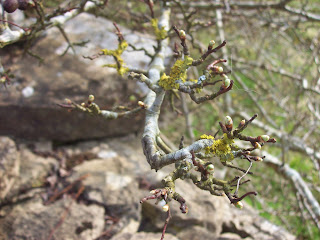The hop was introduced to this country in around the 1520s and before then many other things were used to flavour beer. Nettles were one of them. Have a go at making your own nettle beer and you may be surprised at how refreshing its earthy citrus flavour is. I should think it must be good for you too. This recipe is taken from Roger Phillips's 'Wild Foods', which I think is a lovely book. If I were you I would half the quantities as two and a half gallons is a lot to drink if you don't like it. Also, pick your nettles at this time of year when they are young as older nettles are full of an acid that irritates the kidneys.
100 nettle stalks [with leaves]
2
1/2 gallons water
3lb sugar
2oz cream of tartar
1/2 oz yeast
Boil nettles with the water for 15 minutes. Strain, and add the sugar and the cream of tartar. Heat and stir until dissolved. Wait until tepid, then add the yeast and stir well. Cover with muslin and leave for 24 hours. Remove the scum and decant without disturbing the sediment. Bottle, cork and tie down.
I [Richard not Roger] would use champagne yeast, or the very least a good wine yeast, but please don't use bread yeast or the beer will be yuk! I also use old plastic lemonade bottles which are far more convenient than glass, cork and string.
 |
| A little nettle - don't use big ones. |
Roger Phillips mentions several hedgerow plants that were brought over by the Romans, who grew them as vegetables. Over the years we have forgotten about them and now see them as weeds. Alexanders is the most notable of these plants. It was grown extensively in medieval monastery gardens and was very popular in the vegetable garden up until the 17th-century. It's a Mediterranean plant and is very good to eat and Roger describes it as a 'most exciting vegetable'. Quite peculiar how we have been obsessed with all food and drink from the Med' for the last forty years and have almost forgotten about a delicious Med' veg' that has grown here in abundance for the last 2,000 years.
Last year's cider is a resounding success. It appears to have gained a soft, rounded quality that the previous year's batch certainly did not have. This is apparently due to a second fermentation called the malo-lactic fermentation. The sour lactic acid turns into softer malic acid and makes the drink far more palatable. Thank goodness.
The buds are coming out in the hedgerows and soon we won't be able to see the lichen. It will be great to see the hedgerows in all their splendour again, but the lichen has provided some enthralling bits of colour over the winter months.





No comments:
Post a Comment